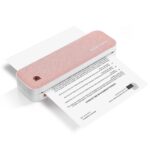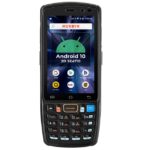Bluetooth thermal label printers offer several advantages, making them a popular choice for various applications. Here are seven advantages of using a Bluetooth thermal label printer:
Wireless Connectivity:
One of the primary advantages is the wireless connectivity provided by Bluetooth technology. This eliminates the need for physical cables, offering greater flexibility in printer placement. Users can connect to the printer from a distance, providing convenience and reducing clutter.
Ease of Setup:
Ease of setup is another compelling advantage. A Bluetooth printer is designed with user-friendly pairing processes, simplifying the connection between the printer and various devices. Whether it’s a smartphone, tablet, or computer, users can establish a Bluetooth connection quickly, reducing the time spent on installation and configuration.
This ease of setup makes Bluetooth thermal label printers accessible to a broad range of users, including those with limited technical expertise.
Mobility and Portability:
Bluetooth thermal label printers are highly portable, allowing users to move them around easily. This is particularly beneficial for businesses or individuals who need to print labels or receipts on the go, such as in a warehouse, retail store, or field service setting.
Compatibility:
Bluetooth is a widely adopted and standardized wireless communication technology. Most modern devices, including smartphones, tablets, and computers, come equipped with Bluetooth capabilities. This ensures broad compatibility, making it easy to connect the printer to a variety of devices without the need for additional adapters.
Cost-Effective:
Cost-effectiveness is another advantage of Bluetooth thermal label printers. The absence of complex cable systems and connectors reduces overall costs, making these printers a more budget-friendly option.
The simplicity of bluetooth technology contributes to lower manufacturing and maintenance expenses, translating into a cost-effective printing solution for businesses and individuals alike.
There are several well-known brands out there with various types of Bluetooth printers available. MUNBYN, being one of the best printer brands out there, offers two types of Bluetooth printers, P130B and P941B, priced at £99.99 and $169.99, respectively. MUNBYN’s Bluetooth printers are equipped with all the major specifications that you need to streamline your printing process. You can easily print sticker labels in-house with these printers without breaking your budget to outsource the process.
Energy Efficiency:
Bluetooth technology is designed to be energy-efficient, contributing to longer battery life for portable printers. This is especially important for users who rely on mobile printing solutions in environments where access to power outlets may be limited. Efficient energy use also aligns with sustainability goals.
Multi-Device Connectivity:
Bluetooth thermal label printers typically support multiple device connections simultaneously. This means that multiple users or devices can send print jobs to the printer without the need to disconnect and reconnect physically. This feature enhances workflow efficiency in settings where several individuals need to access the printer.
In conclusion, Bluetooth thermal label printers offer a comprehensive set of advantages that cater to the diverse requirements of modern printing environments. Bluetooth thermal label printers are a great choice for many businesses because they’re easy to connect wirelessly, simple to set up, and convenient to move around. They work well with different devices, are affordable to use, save energy, and can handle connecting to multiple devices at once, making them flexible and practical for all sorts of jobs.
Whether in a bustling warehouse, a retail store, or out in the field, these printers empower users with the flexibility and convenience needed to streamline printing processes and enhance overall productivity.








